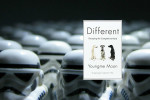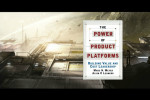Market positioning

High Intensity Marketing by Idris Mootee
Idris Mootee defines the first phase of market positioning as selection of the four C’s: customers, competitors, cost structure & channel choice, and competitive advantage. These four elements allow a company to find a market segment where the company’s distinctive strengths are able to satisfy customer needs better than competitors. After the positioning plan is complete, Mootee says it’s time to tackle the traditional four P’s: product, price, promotion, and place. Mootee aims to show positioning as a strategic exercise and not limited by corporate, market, or product levels.
In High Intensity Marketing, Mootee identifies two levels of positioning, one defined by the four C’s and one at the product level which uses design, technology, and service attributes to define the position of a product. He concludes that there is possibly a third level of positioning relative to product attributes, user benefits, functionality, competition, users, categories, or value (price/quality).
I don’t serve markets. I create them! — Akio Morita
Customers
Selecting who you will serve with your product or service is a fundamental part of market positioning. Traditionally, this is done by segmentation, with a segment defined as: 1) homogeneity within; 2) heterogeneity between; 3) ability to effectively reached and served; and 4) large and profitable enough to justify marketing effort.
In The Innovator’s Solution, Clayton Christenson puts forward an argument for segmenting customers by “jobs to be done”. He gives the example of a milkshake, which is used for many different jobs by different customers.
Competitors
Defining oneself by one’s competitors has many drawbacks (see video below), but Mootee favors a focused approach which avoids head-on competition. He quotes Keniche Ohmae (a senior partner at McKinsey & Co. who created the three C’s framework expanded on above) as advising large scale deployment of resources to a single strategic function to dominate and then following with expansion into adjacent spaces.
Cost structure and channel choice
A channel is “the set of interdependent organizations involved in the process of making a product or service available for consumption or use.” Channels include all the processes and touch points along the path from production to consumption. Channels can be single or multi-tiered and the design of a channel can affect the type of product or service that can be delivered. Channels should be designed according to customer need.
Competitive advantage
Mootee points out that “all market strategy has a life limit and this means continually innovating to build new sources of competitive advantage.” Like Andy Grove, Mootee recommends being paranoid and not resting on your laurels or stopping to celebrate current advantages.
Next, as a company decides where and how to compete, it has four choices:
Evolutionary play, mass markets — lots of competition here
Evolutionary play, niche markets — this may be an attractive market until larger competitors step in
Revolutionary play, mass markets — the Wii and Kinect probably fit here
Revolutionary play, niche markets — Mootee gives the early personal computer market as an example here
Finally, a company must choose product-level positioning along three axes: design, technology, and service delivery. Mootee says “Design, technology and service components work together to trigger stimulations to the senses, the heart, and the mind.” Many products are developed with high design attributes, high technology attributes, or both. Service is less frequently thought of as an important component of product development. High design, technology, and service attributes are characteristic of Nike footwear products as well as their recent technology integrations like Nike ID.
“Freedom from your competition comes from customer focus” — Salim Virani
For a different view on market positioning, watch this video from Salim Virani. Virani says that positioning should be done relative to demand, not supply—just because something is in short supply does not mean that there is demand for it. He points out that positioning should connect supply to demand and that positioning should be relative to other customer problems. He says that by positioning your product or service relative to the competition, you therefore box yourself in to defining yourself relative to the competition, rather than in terms of the needs your customer has.
[youtube=http://www.youtube.com/watch?v=O4kOWPdZJAw&w=530&h=397]







